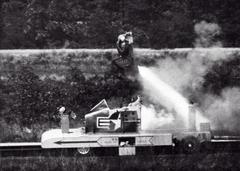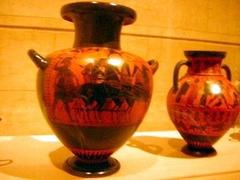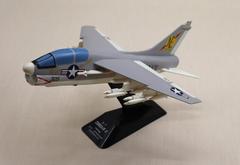Trans Mississippi And Inter Expo Historical Marker
Trans-Mississippi and International Exposition Historical Marker: Visiting Hours, Tickets, and Guide – Elkhorn Historical Site
Date: 14/06/2025
Introduction
The Trans-Mississippi and International Exposition, held in 1898 in Omaha, Nebraska, was a defining moment for the American West. Designed to showcase the region’s economic, technological, and cultural achievements, the exposition attracted over 2.5 million visitors during its five-month run. While the original, grand exposition buildings no longer stand, their legacy endures through historical markers—most notably in Elkhorn and Omaha’s Kountze Park—offering visitors a meaningful way to connect with the past.
This comprehensive guide covers everything you need to plan your visit to the Trans-Mississippi and International Exposition Historical Marker and related Omaha sites. You’ll find details on visiting hours, accessibility, ticketing, directions, and nearby attractions, along with a rich historical context to deepen your appreciation of this pivotal event. Whether you’re a history enthusiast, educator, or curious traveler, this resource will help you make the most of your exploration. For further research, virtual tours and archival materials are also available online (Nebraska State Historical Society; Trans-Mississippi UNL; North Omaha History).
Table of Contents
- Discovering the Exposition Site
- Historical Background
- Visiting Kountze Park Today
- Hours, Tickets, and Access
- Guided Tours and Museum Exhibits
- Nearby Historical Attractions
- Special Events and Photo Opportunities
- Exposition History and Significance
- Architectural Features and Layout
- Notable Exhibits and Events
- Cultural Legacy
- Visiting the Elkhorn Marker
- Practical Tips and FAQs
- Visual and Interactive Resources
- Conclusion and Further Reading
Discovering the Trans-Mississippi Exposition Site
When visiting Omaha, the site of the 1898 Trans-Mississippi and International Exposition provides a unique opportunity to step back in time. Located primarily at today’s Kountze Park in North Omaha and marked by commemorative plaques in both Omaha and Elkhorn, the exposition’s legacy is preserved for new generations to explore.
Historical Background
The idea for the exposition emerged in the late 1800s as Omaha sought to assert its importance in the rapidly developing American West. After the 1894 Trans-Mississippi Commercial Congress and a persuasive campaign led by William Jennings Bryan, Omaha was chosen as the host. The Trans-Mississippi and International Exposition Association, led by local figures like Gurdon Wattles and Herman Kountze, orchestrated the event, which opened on June 1, 1898, and ran until November 1, 1898 (Nebraska State Historical Society).
Federal and local funding supported the exposition, and the donated grounds in North Omaha were transformed into an architectural spectacle inspired by the 1893 Chicago World’s Fair (Trans-Mississippi UNL; North Omaha History).
Visiting Kountze Park Today
Location: Kountze Park, North Omaha (between 24th Street and Sherman Avenue, south of Ames Avenue)
Hours: Open daily, dawn to dusk
Admission: Free
Accessibility: Paved, accessible paths suitable for wheelchairs and strollers
Parking: Street parking available nearby; accessible by Metro Transit bus routes (City of Omaha Parks and Recreation)
The park occupies part of the original exposition grounds, with markers detailing the site’s history. The Grand Court’s former location is now open green space, ideal for reflection and recreation.
Guided Tours and Museum Exhibits
While the park and markers are self-guided, visitors can enrich their experience at the Joslyn Art Museum, which features exhibits and artifacts related to the exposition.
Joslyn Art Museum
- Address: 2200 Dodge Street, Omaha, NE
- Admission: Free
- Guided Tours: By appointment; see Joslyn Art Museum for details
Nearby Historical Attractions
Expand your visit with these notable Omaha sites:
- Old Market District: Historic buildings, shopping, and dining
- Burlington Train Station: Early 20th-century rail hub
- Gene Leahy Mall: Downtown park with public art
- Durham Museum: Regional history in a restored train station
For more ideas, see the Omaha Tourism Official Website.
Special Events and Photo Opportunities
Annual and seasonal events commemorate the exposition, including history walks and cultural festivals. Check local listings or the Omaha Historical Society for schedules.
Top Photo Spots:
- The Elkhorn and Omaha historical markers
- Kountze Park’s scenic grounds
- Artifacts at the Joslyn Art Museum
Exposition History and Significance
The exposition covered 180 acres and featured 21 grand Beaux-Arts buildings surrounding a five-block-long lagoon. These temporary structures—dubbed “The New White City”—were built of staff and illuminated by electric lights, symbolizing progress (My NE History; Trans-Mississippi UNL).
Over 4,000 exhibits highlighted western innovations in agriculture, industry, and the arts. The Midway offered amusements and cultural displays, while new technologies like X-rays and electric lighting wowed visitors (Wikipedia).
The Indian Congress
A significant event, the Indian Congress, brought together over 500 delegates from 35 Native American tribes, offering both cultural celebration and a window into the era’s complex attitudes (Trans-Mississippi UNL; History Nebraska).
Special Events
- Cody Day: Buffalo Bill’s Wild West Show
- Peace Jubilee Week: Celebrating the end of the Spanish-American War, with President McKinley addressing a crowd of 100,000 (My NE History; Wikipedia)
Economic and Cultural Legacy
The exposition gave Omaha national attention, improved infrastructure, and inspired a follow-up event in 1899. Its cultural impact endures, shaping how the region is remembered and celebrated (Wikipedia; History Nebraska).
Visiting the Elkhorn Historical Marker
Location: Elkhorn, now part of Omaha, Nebraska
Access: Open year-round, daylight hours
Admission: Free
Accessibility: Generally accessible; check for updates
Parking: Nearby street parking (Mapcarta)
The marker, part of the Nebraska Historical Marker program, features concise text summarizing the exposition’s significance and stands as a focal point for visitors interested in the city’s transformation.
Note: No restrooms or concessions at the site, but amenities are available in nearby Omaha.
Practical Visitor Tips
- Visit in spring or fall for pleasant weather.
- Bring water, comfortable shoes, and a camera.
- Use Metro Transit Omaha for public transportation options.
- For a deeper experience, access virtual tours and digital archives via Trans-Mississippi UNL.
- Respect the site and surrounding neighborhoods.
Frequently Asked Questions (FAQs)
Q: What are the visiting hours for the markers and parks?
A: Both Kountze Park and the Elkhorn marker are accessible from dawn to dusk, year-round.
Q: Is there an admission fee?
A: No, both sites are free to the public.
Q: Are guided tours available?
A: Occasional tours are offered by local history groups; check with the North Omaha History Project or Joslyn Art Museum.
Q: Is the site accessible for those with disabilities?
A: Yes, paved walkways and flat terrain make both markers accessible.
Q: Where can I learn more before visiting?
A: Explore virtual archives at Trans-Mississippi UNL.
Visual and Interactive Resources
- Trans-Mississippi Exposition Lagoon and Grand Court
- Grand Court Historical Image
- Grand Court at Night
- Fair Program Cover
Interactive Map:
View Kountze Park and Nearby Sites
Conclusion
Visiting the Trans-Mississippi and International Exposition Historical Marker—whether in Elkhorn or Omaha’s Kountze Park—offers a window into a transformative era for Nebraska and the American West. These free, accessible sites, alongside museums and virtual resources, allow you to experience the legacy of a world’s fair that helped shape Omaha’s modern identity. Plan your visit, explore nearby attractions, and immerse yourself in this remarkable chapter of history.
For more information, download the Audiala app, follow Omaha’s historical organizations on social media, and explore further readings below.


